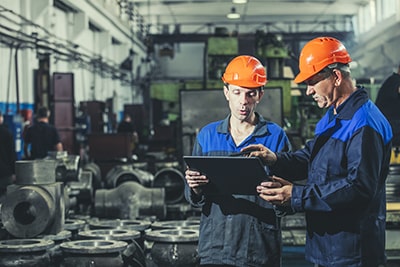Arguably, one of the biggest factors in machine safety is the human element. Functionally, safety systems are designed to protect personnel from:
1. Absentminded actions
2. Overconfident actions
3. General ignorance
Most believe machine safety systems are there to protect the machine operators, but a properly designed system will consider all modes of human interaction, including maintenance and cleaning operations.
There is another very important human factor to consider. Let’s call it the safety culture factor. What is the best way to setup machine safety, and who decides? What is an acceptable risk, what is the best way to determine that risk? Is cost a limiter, or is cost no object when safety is concerned? One of the most important human factors to consider is the culture of safety. How mature is your company in its safety culture?
Let me tell a story to highlight what I’m talking about.
An industrial facility had an accident, and a person was hurt. Luckily, a co-worker was nearby to hit the emergency stop button, or the injury could have been much worse. We were asked to look at the equipment and recommend a safety component for the location of the hazard.
We looked at it and recommended a couple of possible safety components, but more importantly, we recommended a professional risk assessment of the entire machine. You see, it’s important to note two things about this case.
1. The injury occurred in a location no one expected a person to go
2. The person injured was not one of the usual machine operators
Our aim in recommending a full risk assessment was to assess the whole machine, not just fix one hazard. The very foundation of making a machine safe is to conduct a risk assessment of the whole system.
Ok, back to the story.
The initial call for help came from engineering. They were tasked with fixing the issue and wanted our experienced input. Because engineering wanted to do this right, we got into discussions about doing a professional risk assessment. When we asked if they’d had an assessment in the past, our contacts said they weren’t sure and if there had been one, the facility’s safety committee would have performed the work. No one from the safety committee was in our meeting. This is where we started to see a lack of continuity in the company’s machine safety culture and communications.
This brings up a very important point in the risk assessment process. It is so important to engage all departments that have any interaction with a machine, including operations, safety, engineering, and maintenance. The idea is that different departments may not know the extent of other departments’ interactions with the machine. For example, an engineer is not likely to know all the ways an operator or maintenance person works with the machine.

We quoted the risk assessment and had a conference call to go over the details. To paraphrase one of the questions from someone from a non-engineering department: “If the risk assessment discovers other issues, what is OSHA’s perspective on our responsibility?” I interpreted this question like this: “Let’s fix the problem we know about rather than looking for more.”
In the end, they bought an optical presence sensing device for the one hazard and skipped the system assessment. The safety culture was saying, “Make the existing problem go away, and don’t ask for more trouble and cost.”
In the past, safety systems were thought of as production stoppers. But done correctly, a safety system will trip off the machine less frequently, keeping personnel safe and production levels high. Additionally, fewer accidents mean better insurance rates. It’s proven that companies with a deeper focus on safety throughout the organization (top floor to shop floor) have higher OEE, less downtime, fewer injuries, and happier, more productive employees.
This concept is called the safety maturity index; you can learn more about it here. On this page, start with the short “Safety Maturity Index Video.” Then, take the time to see how your company measures up to other similar companies using the safety maturity index tool.
You can find additional resources to assist you here.
Safety is one of our core focuses, both internally and for our customers. We offer a full suite of safety products, training, and services. And we can help you build a comprehensive safety culture, including machine safety. Contact us today!
